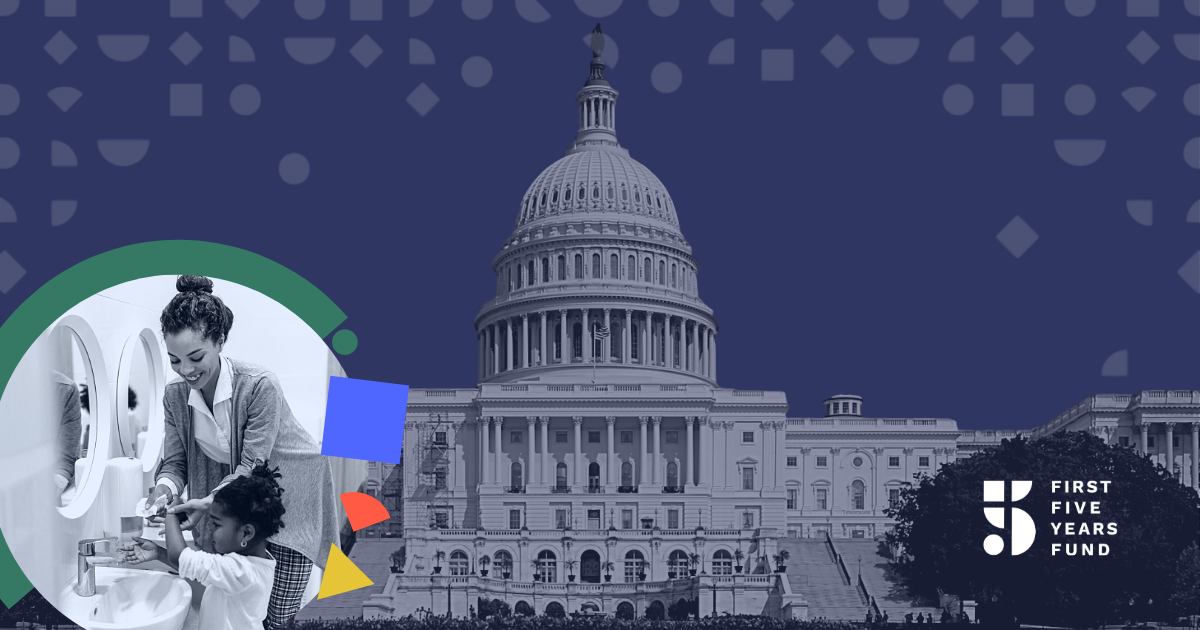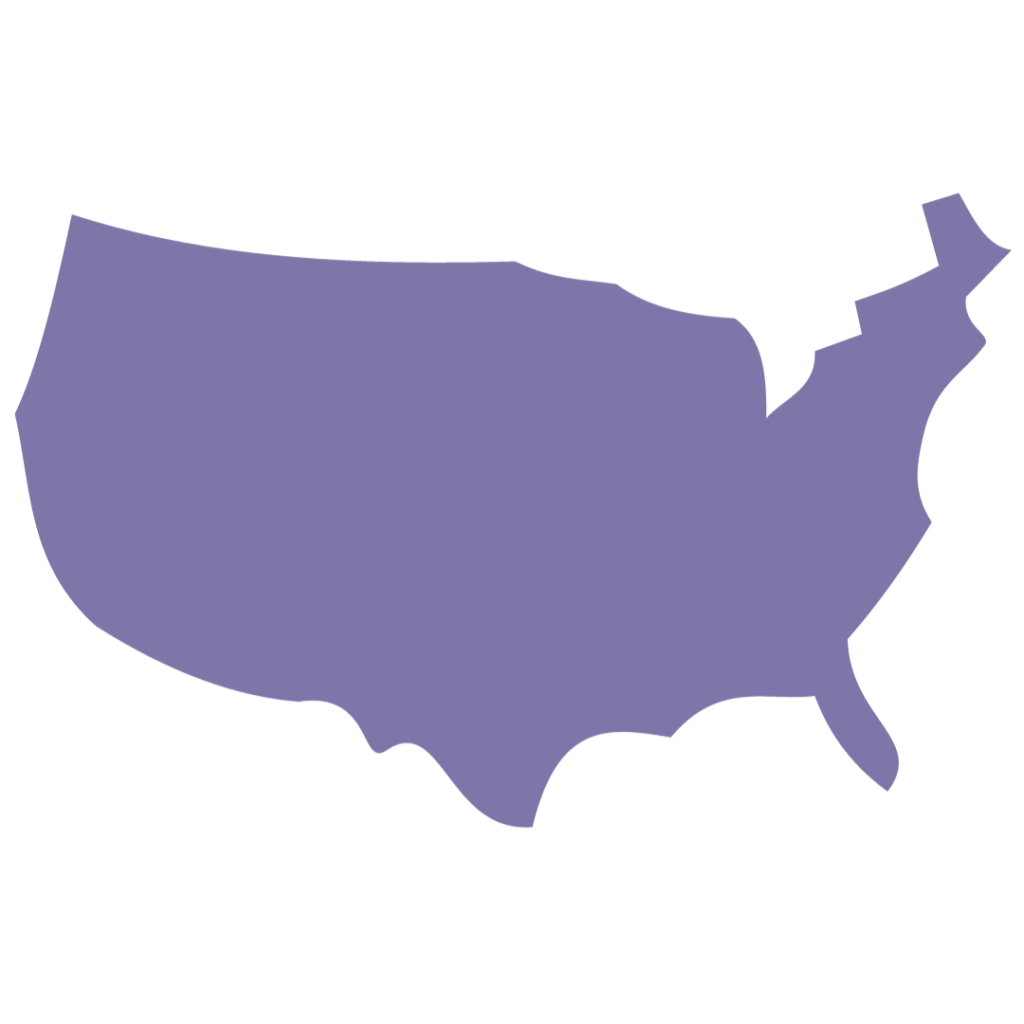What’s Included for Early Learning & Care in the COVID-19 Relief Package?

Congress is now considering a sweeping pandemic relief package that includes a number of elements designed to support families with young children and the early childhood programs they rely on. Various committees will be reviewing the individual components on the package, before the legislation in its entirety comes up for consideration by the full House, and then the Senate.
RELATED: Check out this high-level overview of previous COVID-19 relief proposals and the provisions aimed at supporting child care providers, along with Congressional letters and resolutions calling for significant child care relief funding.
Here is an overview of many of the early learning and care provisions that were included in the proposed legislation:
HOUSE – EDUCATION AND LABOR COMMITTEE
Human Services and Community Supports
Sec. 2203. Child Care and Development Block Grant (CCDBG). Provides:
- $14.99 billion for CCDBG, which lead agencies may obligate during the current and succeeding two fiscal years and use to provide child care assistance to essential workers regardless of income.
- $23,975,000,000 for child care stabilization as described in section 2204 and in accordance with CCDBG Act requirements.
- $35 million for federal administrative costs, including technical assistance and research, to carry out child care stabilization and implement the additional funding for CCDBG.
Sec. 2204. Child Care Stabilization. Creates child care stabilization grants to be allocated pursuant to the CCDBG Act. A lead agency may reserve up to 10% of grant funds for administrative and technical assistance costs; the remainder of funds must be used to award subgrants to qualified child care providers that were, on the date of submission of the application for the subgrant, either open and available to provide child care services or closed due to COVID-19. Subgrant amounts must be based on the child care provider’s stated current operating expenses and may be used for personnel expenses, cleaning supplies and personal protective equipment, and mental health supports. The lead agency must notify the Secretary of Health and Human services if it is unable to obligate at least 50% percent of funds within 9 months of enactment.
A child care provider that receives funds must certify that for the duration of the subgrant, the child care provider will:
- Implement policies in line with guidance from State, Tribal, and local authorities, and to the greatest extent possible, guidance from the Centers for Disease Control and Prevention;
- Pay no less than the full compensation the provider was paying each employee on the date of submission of the application for the subgrant; and
- Provide relief from copayments and tuition payments to families enrolled in the provider’s program, to the greatest extent possible, prioritizing such relief for families struggling to make either type of payment.
Sec. 2205. Head Start. Provides:
- $1 billion for Head Start programs to remain available through September 30, 2022, to carry out the Head Start Act;
- Including for Federal administrative expenses; and
- To be allocated to each Head Start agency based on funded enrollment.
Department of Education
Sec. 2001. Elementary and Secondary School Emergency Relief Fund (ESSERF). Provides $128,554,800,000 for grants to State educational agencies (SEA), with 90% allocated to local educational agencies (LEA) as specified for funds provided in FY 2021 for the ESSERF of the Education Stabilization Fund. Of these new funds, SEAs are required to reserve at least 5% and LEAs must reserve at least 20% to address learning loss. The LEA reservation for learning loss is subject to the requirements of ESEA section 1117, which requires LEAs to provide equitable services based on the number of low-income students, residing in eligible attendance areas within the district, who attend private schools.
Sec. 2002. Higher Education Emergency Relief Fund (HEERF). Provides $39,584,570,000 for grants to institutions of higher education (IHEs) as specified for funds provided in FY2021 for the HEERF of the Education Stabilization Fund. Public and private non-profit IHEs receiving new HEERF allocations will be required to spend at least 50% percent of such allocations on emergency financial aid grants to students. For-profit IHEs receiving allocations and IHEs receiving allocations due to the enrollment of students enrolled exclusively online will have to spend 100% of such allocations on student aid. IHEs will determine which students receive emergency financial aid grants and must use a portion of the institutional share to implement evidence-based practices to mitigate COVID-19 and conduct outreach to students regarding the opportunity to receive a financial aid adjustment due to the recent unemployment of a family member or other changes in financial circumstances.
Sec. 2010. Institute of Education Sciences. Provides $100 million to study learning loss.
HOUSE – WAYS AND MEANS COMMITTEE
Child Care for Workers
Sec. 9801. Child Care Assistance Programs. Increases annual funding for the Child Care Entitlement to States (CCES) to $3,550,000,000 per year, of which $3,375,000,000 is for the states and Washington DC, $100,000,000 is for American Indian tribes and tribal organizations, and $75,000,000 is for U.S. territories. Additionally, waives the required state match on new funding for FY2021 and 2022.
Emergency Assistance to Families through Home Visiting Programs
Sec. 9101. Provides $150 million to MIECHV-funded home visiting programs to remain available for obligation through the end of fiscal year 2022. To receive funding, entities must be operating a MIECHV home visiting program, consent to amendment of their existing grants or contracts, agree not to reduce staffing levels during the pandemic, and, if they choose to provide diapering supplies during the emergency, coordinate with diaper banks operating in their service areas, to the extent practicable. Funds may be used to:
- Serve families with home visits, whether in person or virtually;
- Pay staff costs associated with home visits (including hazard pay);
- Train home visitors on virtual home visits, emergency preparedness, and domestic violence;
- Help enrolled families acquire technology needed to conduct a virtual home visit, including WiFi access or cell phone minutes;
- Provide emergency supplies to enrolled families, including formula, food, water, hand soap and sanitizer, and diapers and diapering supplies;
- Coordinate with and reimburse diaper banks when used to provide emergency supplies;
- Provide prepaid grocery cards to an eligible family.
Promoting Economic Security
Sec. 9611. Child Tax Credit (CTC). For 2021:
- Makes the CTC fully refundable;
- Increases the amount to $3,000 per child ($3,600 for a child under age 6);
- Increases the age of qualifying children by one year (17-year-olds qualify for the credit);
- The additional $1,000 or $1,600 per-child (as it is added to the existing $2,000 per-child credit) is reduced by $50 for every $1,000 joint filers earn over $150,000 (measured in modified adjusted gross income – $112,500 for head of household filers and $75,000 for other filers). When so reduced, the credit plateaus at $2,000, and then phases out at the present law levels established in the Tax Cuts and Jobs Act ($400,000 for joint filers, $200,00 for other filers).
- The Secretary of the Treasury is directed to:
- Issue advance payments of the CTC based on 2019 or 2020 tax return information on a monthly basis or, if this is infeasible, as frequently as is feasible.
- The advance payments begin July 1, 2021, and will comprise half of the CTC for which the taxpayer is otherwise entitled to for 2021 with the remaining half claimed on the 2021 tax return. (The taxpayer’s CTC claimed on the 2021 tax return is reduced by the aggregate of any advance payments.)
- Establish an online portal to allow taxpayers to opt-out of receiving advance payments and provide information regarding changes in income, marital status, and number of qualifying children for purposes of determining each taxpayer’s maximum eligible credit.
- Issue advance payments of the CTC based on 2019 or 2020 tax return information on a monthly basis or, if this is infeasible, as frequently as is feasible.
Sec. 9631. Child and Dependent Care Tax Credit (CDCTC). For 2021:
- Makes the CDCTC fully refundable;
- Increases the maximum credit rate to 50%;
- Amends the phaseout threshold to begin at $125,000 instead of $15,000;
- Increases the amount of expenses eligible for the credit to $8,000 for one qualifying individual ($16,000 for 2 or more qualifying individuals) such that the maximum credits are $4,000 and $8,000; and
- Phases out the credit percentage at $125,000 and plateaus at 20% for taxpayers whose AGI is in excess of $400,000.
Sec. 9632. Increases the exclusion for employer-provided dependent care assistance from $5,000 to $10,500 (from $2,500 to $5,250 in the case of a separate return filed by a married individual) for 2021.
Subscribe to FFYF First Look
Every morning, FFYF reports on the latest child care & early learning news from across the country. Subscribe and take 5 minutes to know what's happening in early childhood education.



